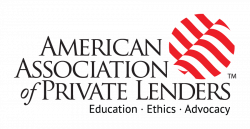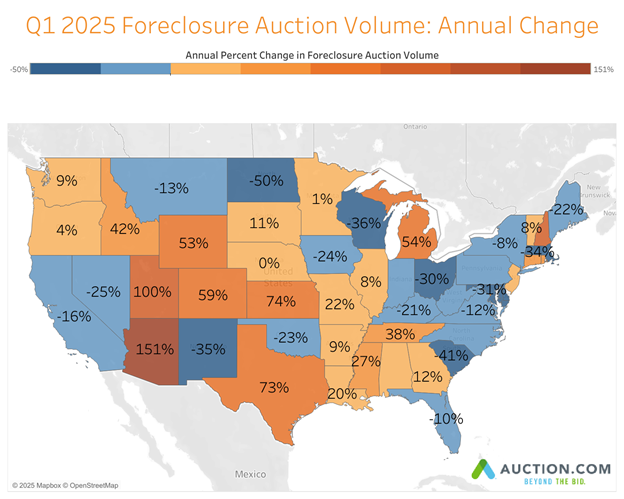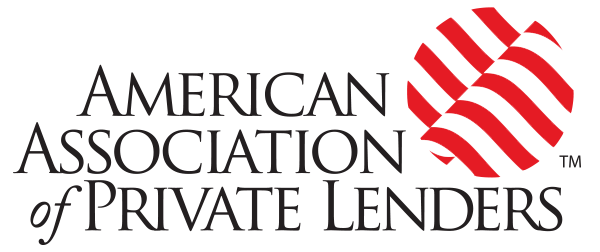The nation’s top ten private lenders originated nearly a quarter of all residential volume, even as the number of lenders grew 15 percent.
Michael Fogliano and Sean Morgan, Forecasa
Several key trends shaped the 2024 private lending market. Among these were shifts in origination volume, loan sizes, geographic distribution, lender competition, and product mix.
This article addresses each of these trends. Private lenders can use Forecasa’s data-driven insights to navigate a rapidly evolving market and make informed strategic decisions.
Cumulative Origination Volume
Mortgage origination volume peaked in 2022. However, rising interest rates and inflation in 2023 led to a sharp decline in borrower demand, bringing origination volume to its lowest level in four years (see Fig. 1).
Lenders too were more cautious given the economic uncertainty. Although loan originations still have not returned to 2022 levels, there has been a recovery in demand compared to 2023. Throughout the four-year period, loan sizes have remained relatively stable (see Fig. 2).
Geographic Trends
In 2024, Alabama saw the largest growth in market share (33%) relative to all other states. Across the U.S., 90 MSAs had at least 500 private lending mortgage originations. When measuring market share of the Top 200 MSAs, most don’t see a change in market share by +/-15%, but two of the top five largest growing MSAs were in Alabama.
The five MSAs with the largest growth in market share in 2024 compared to 2023 were:
Birmingham, Alabama metro area (68%)
Wichita, Kansas metro area (51%)
Macon-Bibb County, Georgia metro area (37%)
Montgomery, Alabama metro area (35%)
Winston-Salem, North Carolina metro area (30%)
The five MSAs that saw the largest decrease in market share in 2024 compared to 2023 were:
Sacramento-Roseville-Folsom, California metro area (-21%)
Santa Rosa-Petaluma, California metro area (-21%)
Killeen-Temple, Texas metro area (-21%)
San Francisco-Oakland-Fremont, California metro area (-16%)
Fayetteville, North Carolina emtro area (-15%)
Although not represented at the MSA level, Oregon saw the largest decline in market share among states (-13%).
Private Lender Concentration
Kiavi has maintained its lead in private lending mortgage originations, originating 7.9% of all private lending mortgages. Of the top 200 MSAs, Kiavi was a top-five lender in 144 of them. The next closest private lender was RCN Capital (top five in 54 of the top 200 MSAs).
The concentration of top players has remained consistent over the last four years, with the top 10 private lenders making up anywhere from 22-24% of all originations (see Fig. 3).
Entrants/Exits
Although the biggest lenders continued to have a strong presence in the market, many new and local lenders entered the market and established themselves. In 2024, 10,136 unique private lenders originated a mortgage. This is an increase from 2023, when we saw 8,709 private lenders, but the net gain came with a large mix of entrants and exits. Compared to 2023, there were 3,347 “new entrants”—lenders that did not originate in 2023 but did in 2024; and there were 1,920 “exits”—lenders that originated in 2023 but did not in 2024.
Figure 4 illustrates the origination volume in 2024 of those 10,034 lenders (volume data not available for 102 lenders).
RTL vs. DSCR
With the rise in interest rates over the last few years, RTL loans have become much more common among private lenders. In 2024, there was a 65% increase in RTL loans from 2021, the year before interest rates began to rise. Additionally, the average loan size increased 14%, from $451,000 to $512,000. The increase in DSCR originations has not been as large (9%), with the average loan size decreasing 12%, from $407,000 to $357,000.
Lender Loyalty
Forecasa looked at every borrower with at least five private lending loans within a year. In 2024, of the borrowers that had at least five loans, nearly two-thirds (63%) used more than one lender and 37% used the same lender for all their loans. Since 2021, this loyalty has decreased year over year. Active borrowers are increasingly using more than one lender (see Fig. 5).
This data shows that borrowers are increasingly willing to shop around for the best deal. With the rise in interest rates, borrowers are more price-focused and motivated to seek out new lenders. As a result, lenders may offer incentives for borrowers to switch or lower fees to acquire a new customer. Ultimately, this leads to a more competitive market with more options for borrowers.
Capital Market Analysis
Many private lenders originate loans and then immediately assign/sell the loan to a note buyer (i.e., aggregators, institutional buyers, insurance companies, regional banks). Figure 6 shows the ratio of private lending loans originated to private lending loans bought has increased for the last three years. This percentage has increased each year since 2021.
The increase in private loan origination to private loans assigned percentage took place despite a consistent number of private loan buyers during that time. More private lenders were selling their loans. Although some lenders choose to balance sheet their loans, more are choosing to originate to sell.
Although the number of buyers has remained steady, the demand for buying private loans has increased (see Fig. 7).
Non-QM DSCR Activity
A significant increase in volume from 2023 to 2024 was driven by more lenders participating in the space, prompted by a lack of conventional refinancing options and new investors purchasing DSCR loans (see Fig. 8).
There has also been an increase in overlap between non-QM and private lending DSCR origination volumes. In some cases, the non-QM lenders are buying DSCR loans originated by the private lenders. United Wholesale, one of the biggest conventional residential lenders, increased their presence in the DSCR market (see Fig. 9).
Individual Lender/Family Trust Analysis
Figure 10 shows the total origination volume of individual lenders and family trusts. The total origination volume has increased every year since 2021.
Summary
Overall the market became more competitive in 2024. There are more private lenders overall, borrowers are motivated to seek out new lenders, other types of lenders (non-QM, individuals, family trusts) are offering competing products, and loan buyers are showing more demand to buy private loans.





















Leave A Comment